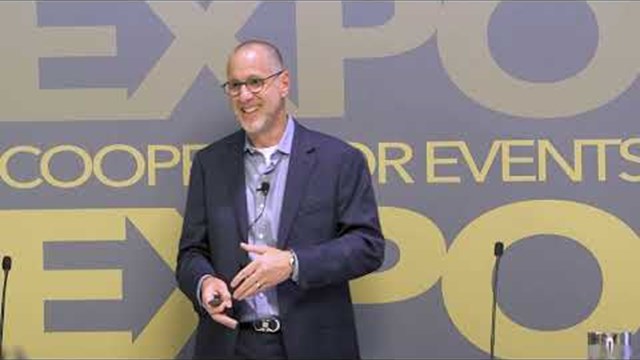
“Robert’s Rules spell out the procedure for conducting meetings and activities of an organization for making decisions, and that the majority will rule,” says Teresa Dean of the American Institute of Parliamentarians (AIP).
A Brief History
Robert’s Rules of Order were developed by Henry Martyn Robert in the 1870s when he was asked to preside over a church meeting, according to the official website for Roberts Rules of Order. Having never presided over a meeting before, that one didn’t go very well. He ended up determined to never attend a meeting again without having some understanding of parliamentary law.
There were a few books available on the subject then, and Robert studied them. As he was transferred around the United States, he discovered disorganization ruled in meetings as people from all over the country brought different ideas as to what the correct way to run a meeting was. He then decided to streamline everything by writing Robert’s Rules of Order, the first edition of which was published in 1876.
Using the Rules
The most recent edition of the rules, which have been updated over the years, is titled, Robert’s Rules of Orders Revised, 10th Edition. One problem is that the rules in their complete form can be somewhat difficult to understand.
“It’s written on the college level,” Dean says. “It’s not easy to read but there are many tools out there seeking to learn parliamentary procedure that are written on an easier level. The authors have written a simplified version called Robert’s Rules of Order in Brief, which is more understandable, user-friendly and deals mainly with the simple rules.
The full version runs over 600 pages and goes into details beyond how to conduct meetings, including how motions are formed and handled, how they interlock, and how an assembly accomplishes goals. Dean says the shorter version works for many organizations and would likely work for many condos and co-ops. “Condos, and any organization in fact, can learn the less complex rules and usually accomplish the will of the majority,” she says.
According to Rick Fry, a property manager and the owner of RCP Management in Princeton, New Jersey, the rules can help condo and co-op boards run better meetings.
“The best boards run a very structured, business-like meeting,” Fry says. “At the end of the day, every community is first and foremost a corporation. They run it truly as a business meeting with a structure and an agenda [and] time limits for discussions. Not [necessarily] strict compliance, but adherence to Robert’s Rules of Order.”
According to Fry, you can see the rules in action while watching C-SPAN to get an idea of what they’re all about.
“[There’s] a chairperson who is the president and allocates time for people to speak. Robert’s Rules dictate how discussions and motions are brought to the floor. . . . It’s a formal process which is important for any legislative body. In a community association, an observance of those formalities is important.”
It’s also possible for an organization to use the parts of the rules that address its needs. “Normally the bylaws will specify specific rules the organization goes by,” Dean says. “And the Robert’s Rules supplement those that are identified by the organizations themselves.”
According to the official Robert’s Rules website, an organization that is going to adopt the rules as its parliamentary authority should write the following words into its bylaws:
“The rules contained in the current edition of Robert’s Rules of Order Newly Revised shall govern the Society in all cases to which they are applicable and in which they are not inconsistent with these bylaws and any special rules of order the Society may adopt.”
“The organization normally has a constitution or bylaws or a combination document, and in that document it should specify the book on parliamentary procedure the organization is going to follow,” Dean says. “And most organizations specify Robert’s Rules of Order Revised, the latest edition, as their parliamentary authority.”
Why Use Parliamentary Procedure?
So maybe your association is getting along just fine without following parliamentary procedure — after all, running a meeting is pretty basic stuff. But a good parliamentary procedure book will delve into details that a lot of amateurs are likely to miss.
For example, the rules state that when voting, the word “majority” should be defined only as “more than half.” That may seem obvious, but some organizations word it differently, such as “50 percent plus one.” That can be a problem, according to Robert’s Rules. Let’s say you have 17 voting members, and nine members vote in favor of a motion while eight oppose. That is more than half but it isn’t 50 percent plus one. That could open the door toward someone claiming that a rule is invalid.
Similarly, the rules state that you can’t round off to the nearest number when determining a vote because “the requirement of a two-third vote means at least two thirds.” These are two of the more simple examples of details that Robert’s Rules go into that laymen are likely to overlook.
Not every building uses Robert’s Rules or another formal, detailed guide to parliamentary procedure in running meetings. Majorie Adams, president of 670 West End Ave., says her building runs productive meetings in a different manner.
“I think [Robert’s Rules of Order] are probably over-formalistic for us,” Adams says, adding that since she’s an attorney she knows how to get things done legally. The building’s meetings feature motions and seconds and are in accordance with the bylaws, but they don’t use Robert’s Rules.
“Some buildings are more formal,” Adams says. “It’s not harmful, but I don’t know that it’s a necessity.”
“We’re a small building,” says Betsy Ayers, president of 225 East 47th Street. “I think that’s probably why we’re a little less formal, but we do the legal guidelines of co-op rules that were established at the start.”
Other Guides
If you’re following Robert’s Rules of Order, you’re following parliamentary procedure. But it isn’t the only option out there. Another book available is entitled The Standard Code of Parliamentary Procedure by Alice Sturges, the most recent edition of which was edited by members of the American Institute of Parliamentarians.
If you are intent on using Robert’s Rules, you need to be wary of versions that appear on the Internet, and even some that are newly printed. Since the rules have been around for so long, the earliest editions aren’t protected by copyright. As a result, they’ve been republished and revised by writers with “variable qualifications in parliamentary law,” according to the Robert’s Rules official website. One book published under the name even uses an entirely different text. The edition that is sanctioned by the Robert’s Rules Association is the 2000 edition of Robert’s Rules of Order Newly Revised.
The rules have been updated over the years in order to fit the needs of today’s organizations. The current edition covers a few things that weren’t issues in Robert’s day, like holding meetings via telephone conference calls. The rules state you can do so only if your bylaws specifically allow them. Then the meetings have to be conducted in a manner where all members can hear each other at the same time and rules should be adopted to specify exactly how a member seeks recognition and how the floor is obtained during the meeting.
The AIP offers various programs that can teach organizations about parliamentary procedure on various levels, including correspondence courses. Information is available and books are sold at parliamentaryprocedure.org. The official Robert’s Rule website (www.robertsrule.com) offers information intended to help organizations adopt the rules.
The bottom line may be that your building is so small that the board meeting is also the shareholder meeting by default, and business is conducted over coffee and muffins in the board president’s living room. More likely, however, your building could benefit from adopting some or all of Robert’s Rules — even if it’s just so your more soft-spoken residents can get a word in edgewise.
Anthony Stoeckert is a freelance writer and a frequent contributor to The Cooperator.






7 Comments
Leave a Comment